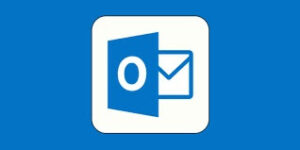Grundig IT Newsletter
Computing News That You Can Use – June 2023
Recent Microsoft Outlook Changes That You May Have Noticed Or Will See Soon
A very large portion of the professional world uses Microsoft Outlook to handle their email – It’s the premier email handling system out there. It has an ocean of functionality, and most people only dip their toes into it. Further, Microsoft is always adding more, and very rarely giving good explanations of their changes. We’re going to start by showing how to adjust a recent update, and then we have a selection of other small tips and tricks for Microsoft Outlook.

A recent update to Microsoft Outlook has caused a few changes that people seem unhappy with. A number of people have come to us asking for assistance in fixing or undoing the changes and restoring the application to the format that they all are familiar with. The most obvious change is that a selection of the in-Outlook applications – Email, Calendar, People – were moved from the lower left of the window to the left as a sidebar. I’m sure Microsoft changed it for some good reasons, but I haven’t seen many clients who are happy with it.
Luckily, undoing this update’s change is a very simple process – though it’s not a particularly obvious one. The setting to change is hidden in the Options settings – accessed through the File menu in the upper left. In the Options section, click advance. The first section there is Outlook panes, where you can disable the ‘Show Apps in Outlook’ checkbox. Click OK, and you’ll get a prompt letting you know the changes will take effect the next time you open Outlook.
Microsoft continually updates software, offering changes, updates, streamlining and perceived enhancements to their software. Unfortunately, the versioning of their Office software makes pushing out the changes somewhat complicated. With Office 2016, Office 2019, Office 2021, and Office 365 all in active use and supported, not every feature enhancement gets updated at exactly the same time.
Again in Microsoft Outlook, a feature that has been in the works for some time is the email Signature Sync option. This feature has not rolled out evenly to the product line, and is active only for Microsoft 365 domain accounts. This feature lets your Outlook email signatures to be shared between devices and utilized in the Outlook Web Access portal as well. Even so, it doesn’t work perfectly as advertised on all applications. It is supposed to be a two-way synchronization, allowing you to create signatures on your desktop app or the web access portal, but in some instances it only seems to sync one way, from the web down to the application, and not back. In other cases, the signature sync is not working at all – signatures saved on the web and signatures saved on the app are not syncing at all. This feature will probably improve over time, so be patient.
We all get a lot of emails over the course of a day. Some people get massive influxes of email even overnight. Everyone deals with this differently. Many people we’ve worked with like to spend time organizing incoming mails to reduce the clutter in the main Inbox. This can be very helpful if your email handling style works with it, though not everyone does.
A useful trick – which a lot of you may know already – is that Microsoft Outlook can actually sort a lot of incoming email automatically. You can use the Manage Rules settings to set it up, but for those who don’t want to work with the more advanced interface, there is a shortcut for incoming mail from specific senders! If you right-click on an email from the sender in question, and go to the Rules Menu, you will have the option to Always Move Messages From: emailname. If you select this option, Outlook will automatically create a rule to move all incoming emails from that source to a chosen folder. I like to have a centralized Inbox, so I try to have only a few automatic organization rules for mails that never require a quick response – I have rules to sort incoming tech newsletters to a specific subfolder, and to sort Google usage reports to another.
But there’s a lesser-known trick you can also utilize to recognize certain emails: conditional formatting. I have configured my Outlook to use a different fonts for emails coming from my coworkers or other senders. To do this, you will need to open the View Settings in your inbox. From your Inbox, select the View tab, then in the upper left, select View Settings. When the Advanced View Settings opens, you want to click on the Conditional Formatting button. This lets you modify how your incoming emails will appear in your Inbox – we want to create a new rule, so click on Add, which adds an additional formatting rule at the bottom of the list. Name it something descriptive, and then click on Font to select the font you want to use. Once you have the descriptor and the selected font, click Conditions to define when that new font option appears. There are a lot of options on the next window, but we only care about the FROM line. You can click on the From button to select someone in your contacts, or you can type their name into the field (You need to type the name as it appears, not the address). I instead make the From line @grundigit.com to highlight email from other Grundig IT senders.
What tips and tricks do you use for Outlook or other Microsoft apps like Word, Excel, etc? We want to hear from you.
Tom Grundig – 925.528.9081 – Tom@grundigit.com
Quote of the Month
“It does not matter how slowly you go as long as you do not stop.”
-Confucius
